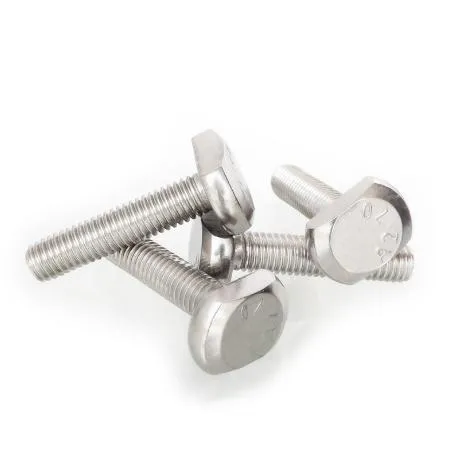

Exploring Types of T-Bolts
Nov . 20, 2024 15:58 Back to list
Exploring Types of T-Bolts
T-bolts are a specialized type of fastener commonly used in various construction and manufacturing applications. Their unique shape allows for secure anchoring in T-slot profiles, making them ideal for assembling structures, machinery, and equipment. This article will delve into the different types of T-bolts, their features, and their applications.

What is a T-Bolt?
A T-bolt features a T-shaped head that provides a strong anchor point when inserted into a T-slot rail or channel. This design allows for easy adjustment and secure fastening, making T-bolts popular in applications where flexibility and stability are required.
Types of T-Bolts
Standard T-Bolts:
- These are the most common type of T-bolts, featuring a flat T-head.
- They are typically used in woodworking and metalworking applications for connecting components securely.
- Available in various sizes and materials, including steel and stainless steel, to suit different environments.
Adjustable T-Bolts:
- These T-bolts allow for fine adjustments after installation, making them ideal for applications where precision is crucial.
- Commonly used in machinery and equipment where alignment is necessary.
Heavy-Duty T-Bolts:
- Designed for high-stress applications, these T-bolts are thicker and made from stronger materials.
- Often used in industrial settings where heavy loads are common, such as in construction scaffolding or machinery assembly.
Nylon-Tipped T-Bolts:
- These bolts feature a nylon tip that helps to prevent damage to surfaces when fastening.
- Ideal for applications where the aesthetics of the finished product are important, such as furniture assembly.
T-Head Bolts:
- Similar to standard T-bolts, but with a larger head to provide more grip and stability.
- Often used in applications where the bolt may be exposed, providing a more substantial anchoring point.
Applications of T-Bolts
T-bolts are versatile and find use in a wide range of applications, including:
- Furniture Assembly: Used in the construction of modular furniture, where quick assembly and disassembly are required.
- Industrial Machinery: Common in the assembly of machines and equipment, allowing for adjustments and reconfiguration.
- Building Construction: T-bolts are used to secure beams and other structural components in buildings and bridges.
- Automotive Industry: Often used in automotive applications for securing parts and components.
Choosing the Right T-Bolt
When selecting T-bolts for your project, consider the following factors:
Material: Choose between stainless steel, carbon steel, or other materials based on corrosion resistance and strength requirements.
Size: Ensure the T-bolt size is compatible with the T-slot or channel you are using.
Load Requirements: For heavy-duty applications, opt for heavy-duty T-bolts that can withstand higher stress.
Adjustment Needs: If adjustments are necessary post-installation, consider using adjustable T-bolts.
Understanding the different types of T-bolts and their applications is essential for anyone involved in construction or manufacturing. These fasteners offer versatility, strength, and ease of use, making them invaluable in a variety of settings. By selecting the right type of T-bolt for your specific needs, you can ensure secure and efficient assembly in your projects, enhancing both functionality and safety. Whether you’re building furniture, machinery, or structures, T-bolts provide a reliable fastening solution.
Latest news
-
The Versatility of Threaded Rods for Your Projects
NewsJun.11,2025
-
The Quality Hex Head Self Tapping Screws for Every Project
NewsJun.11,2025
-
The Essential Fasteners for Every Project
NewsJun.11,2025
-
High-Quality Flange Nuts for Your Next Project
NewsJun.11,2025
-
Explore the Versatility of T Bolts for Your Projects
NewsJun.11,2025
-
Explore the Best Slotted Channels for Your Projects
NewsJun.11,2025

